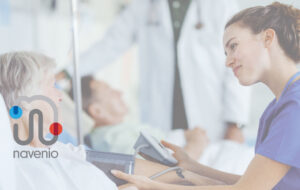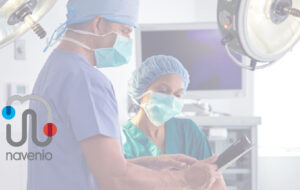The Nursing Care Revolution

COVID-19 revealed cracks within the healthcare system that needed to change. Nearing the top of the priority list was to recognize the indispensable role of nurses, and the need to empower them with new technologies that bridge the gap between medical access and social distancing. This is what happened, with nurses emerging as the frontline heroes during a time of crisis and misery. The public joined together to appreciate their selflessness, bravery, and hard work, boosting the reputation of the nursing profession to new heights. Behind closed doors, however, nurses were enduring a personal crisis.
Enter the Nursing Crisis
Since the pandemic, the workload of nurses has increased by over 60%, leaving half of them feeling drained and burnt out. Staff numbers have dropped by 3.3%, with many working nurses seriously contemplating leaving their jobs or the profession altogether, spurring a national crisis. Without a practical solution, the worst might be yet to come—an aging population will only increase the number of patients through the door needing urgent attention.
Addressing these challenges requires a multifaceted top-down approach. If hospitals are to improve workforce efficiencies and enhance communication between patients and nurses, policy changes are a prerequisite. New policies must aim to create healthier work environments, address nurse-to-patient ratios, and foster a culture of respect and empowerment. Equally important is to continue giving nurses access to innovative technologies that reduce their burden and improve job satisfaction.
How New Technologies are Reshaping the Nursing Profession
The integration of technology holds immense promise in revolutionizing nursing practice. In particular, real-time location services (RTLS) and artificial intelligence (AI) are capable of integrating with and enhancing the functionality of current digital tools, such as Electronic Health Records and nursing call systems. Embedding them within mobile devices (Apple/Android) will even allow nurses to quickly know when a service provider will arrive at the bedside (i.e., much like a rideshare app).
Experts believe RTLES and AI technologies are poised to help hospitals grapple with overwhelming patient volumes by streamlining critical daily tasks, turning chaotic patient care into well-organized and efficient care. Already, hospitals implementing these technologies have reported a 94% improvement in overall task volume and a 31% decrease in service response time.
Technology as a Means to Empower Nurses
The hope is that new technologies serve as proactive tools for nurses. By facilitating essential support services, such as patient transport and rapid meal delivery, that have historically disrupted patient care, nurses can focus on the high-priority needs of the patient, trusting that other care teams will support them in a timely fashion. Nurses may regain a sense of control and intrinsic motivation, knowing they can make a difference without sacrificing their wellbeing in the process. And perhaps more importantly, nurses on the brink may have a chance to reflect and see a brighter future, not just for them but their patients too.
How Navenio Can Assist the Nursing Care Revolution
Leveraging smartphone-based RTLS and AI, companies like Navenio empower healthcare teams to work more efficiently, ensuring nurses have the right tools at their disposal to provide high-quality care. With a focus on nurse empowerment and privacy and security at the forefront, Navenio’s award-winning innovative solutions are poised to drive meaningful change in patient care delivery. For more information visit https://navenio.com/




